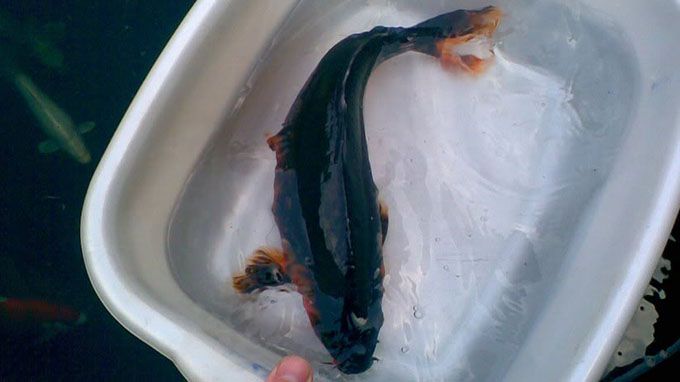

Define fishing in the dark full#
Trout especially are at full energy at around 55-60 degrees F, and may not be rising if the water is too cold, or too hot. Often times, this may be due to temperature factors.

If you’re having trouble matching the hatch, or even identifying any insects around, a streamer may be a viable alternative to topwater or nymphs. Has there been a recent rainstorm? Are there no noticeable insects around? Is the water murky and deep? These are all factors to consider when determining whether or not to throw on a streamer. When and Where to use a Streamer… Think Dirty, Think Deep These fish got this big for a reason, and that’s because they don’t take anyone’s sh*t. A reactionary strike is when your fly glides passed a hunkered down fish, and that fish swipes at it, not out of a desire to eat it, but out of pure primal instinct. Streamer fishing oftentimes triggers reactionary strikes in predatory fish such as trout, bass, and other large underwater game. drifting nymphs and tossing dries, is that it’s a great way to hook fish that aren’t actively feeding.

It’s not just about hungry fish! One of the most advantageous aspects of fishing streamers vs. Every angler can remember their first time feeling or seeing a determined fish attack their streamer. Streamer fishing can be one of the most exciting methods of fly fishing as it is very involved and usually produces violent strikes when a fish decides to take the fly. By using certain cast and retrieve methods listed here, an angler can cover entire pools in an efficient, and often successful manner. Streamers are also a great way to cover a large amount of water in a smaller time frame.

Aggressive fish will often attack meaty snacks for a plethora of reasons such as hunger, territorialism, or just plain instinct. When it comes to answering why to use a streamer as opposed to a different fly setup, the main reason is simple: big fish need lots of protein to survive, and in turn, will attack big flies when given the chance. Why use a streamer? There’s always a bigger fish This means that their movement is mostly caused by the angler stripping in line in order to draw the fly back for another cast. Streamers are usually fished more attentively than the traditional dry-fly or nymph rig, as they are fished with an active retrieve. Sizes of the fly can vary greatly between small and simple wooly buggers, all the way to complexed articulated flies that stretch the size of your hand. Streamer flies can also take the likes of leeches, crayfish, and other underwater morcels larger fish like to dine on. A streamer is built to imitate a “bait-fish”, or a smaller fish that larger fish generally like to feed on, such as sculpin and minnows. Streamer fishing is a method of fly fishing using a submerged fly called a streamer. What is Streamer Fishing? Becoming the fish… What Equipment to Use When Fishing Streamers Whether you’re a seasoned vet, or a day 1 angler, streamer fishing can be intimidating, but with the right know-how, you’ll be slamming those record-breaking monsters you thought only existed in fish tales. In this article, we’re going to lay out everything you need to know about fly fishing with streamers from what they are, to which ones to use and when.


 0 kommentar(er)
0 kommentar(er)
